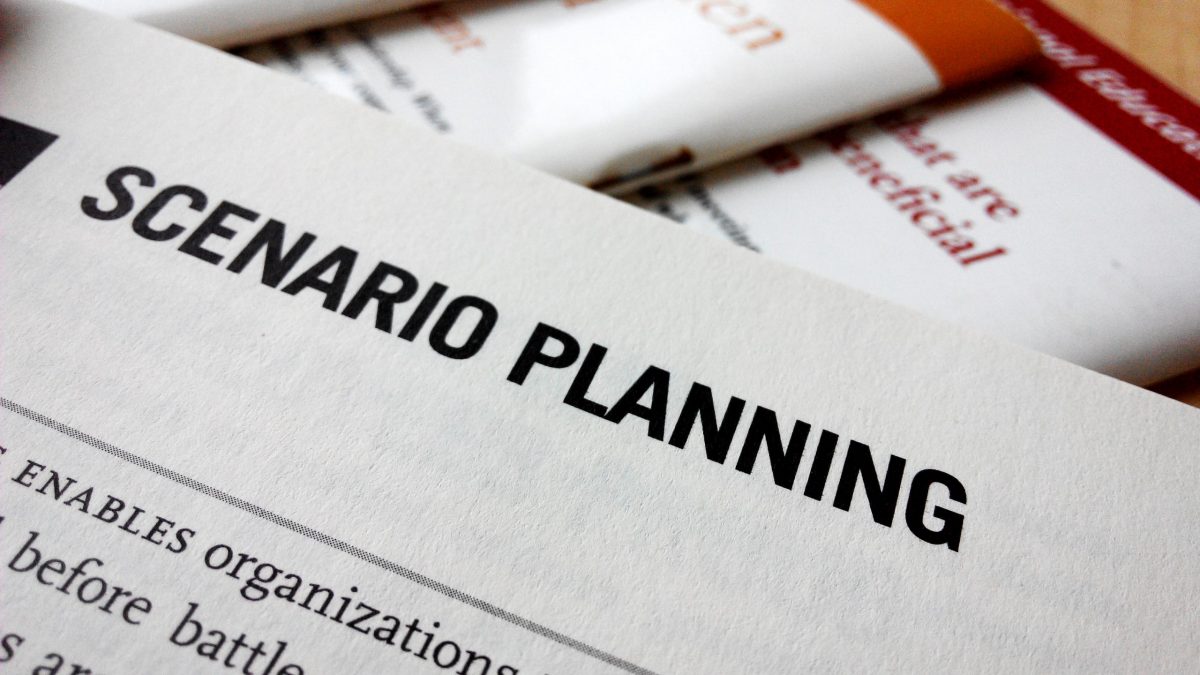
In Uncertain Times, Nonprofits Must Keep Up With Legal Compliance
04.11.2025 | Linda J. Rosenthal, JD

Last August, we ran a three-part series on “scenario planning,” an analytical framework for organizational planning that’s particularly well-suited to periods of crisis, disruption, and uncertainty.
In more stable and predictable times, nonprofits have generally relied on long-term “strategic planning” to chart out and consider various possible paths for the next 3-5 years. But from the earliest days and weeks of the COVID-19 pandemic, there was growing sentiment among experts and sector leaders that the more flexible scenario-planning option would be better.
Our August 2020 series blog posts were based on a version of scenario planning developed by Deloitte LLP’s Monitor Institute. See COVID-19 scenario planning for nonprofit and philanthropic organizations (July 2020, 26 pp), Gabriel Kasper & Justin Marcoux, lead authors and researchers.
The Monitor Institute’s approach presents four possible scenarios ranging from “best” to “worst.” Each one is analyzed at several points in time, beginning at the start date of July 2020 and ending about 18 months into the future. The research team never intended this planning exercise to be static or frozen in time at the original start date. Central to the scenario-planning exercise is that it must be reviewed regularly and adapted to new facts and circumstances.
That’s why – six months later – we’re reminding you to revisit whatever scenario planning exercise you may have conducted last summer and update it to meet the current reality in February 2021.
For organizations that never tried this type of crisis planning, now is a good time to get going.
Just ahead of our first “scenario-planning” post on August 6, 2020, we published Philanthropy Thinkers On Not Returning To “Normal” (August 4, 2020).
“The nonprofit community,” we explained on August 4th, “eagerly awaits the time it can return to ‘normal.’ But many philanthropy thought leaders increasingly urge against going back to how things were before COVID-19 turned the world on its head.” We provided links to some of the “growing chorus of commentators writing on the common theme of why our society’s old ‘normal’ needs a serious reexamination and why right now is the time to do it.”
One of these selections is The Pandemic is a Portal (April 3, 2020), a thoughtful essay by Indian author and activist Arundhati Roy. “Historically,” Ms. Roy explained, “pandemics have forced humans to break with the past and imagine their world anew. This one is no different. It is a portal, a gateway between one world and the next.” She added a challenge: “We can choose to walk through it, dragging the carcasses of our prejudice and hatred, our avarice, our data banks and dead ideas, our dead rivers and smoky skies behind us. Or we can walk through lightly, with little luggage, ready to imagine another world. And ready to fight for it.”
Our August 4th post concluded with a segue into the scenario-planning series that began two days later. The “immediate task for nonprofit and foundation boards and executives is to conduct meaningful ‘scenario-planning’ exercises.” And the Monitor Institute’s recommended approach adopts this critical theme of “not returning to normal.”
In Scenario Planning: Four Models for Nonprofits (Part One) (August 6, 2020), we explained the process followed by the Monitor Institute for developing its COVID-19 scenario-planning project.
Early in the pandemic, international consulting firm Deloitte LLP commissioned and funded a research project for its social-change consultancy, the Monitor Institute. Like professional advisors everywhere, Deloitte was flooded with requests for help by its besieged and bewildered clients including many nonprofit organizations. They needed help navigating the immediate challenges of the new COVID-19 reality. They were “…alternately paralyzed or swamped by a crushing number of choices, without much scaffolding to guide their decision-making.”
Over the course of past emergencies, academics and other experts had developed a body of helpful crisis-management literature specifically pertaining to the nonprofit sector. But the COVID-19 pandemic was so catastrophic that the nation’s nonprofits needed new advice.
The Monitor Institute team plunged right into this effort with surveys and interviews of a “diverse group of sector leaders around the United States to learn “what these people on the ground in the midst of the unfolding crisis were seeing and experiencing and what they anticipate might be coming over the horizon.” The goal was to spark a “‘futures-thinking’ process” to assess “critical uncertainties” right now, pinpoint the new realities arising from the pandemic, and “explore possible future scenarios that may emerge….” The results were analyzed and published quickly in the 26-page report, COVID-19 scenario planning for nonprofit and philanthropic organizations.
In Scenario Planning: Four Models For Nonprofits (Part Two), we continued covering the critical material in the first part of that report. While not the main focus, these pages include necessary preliminary explanations and concepts, including (a) the specialized scenario-planning method adopted by the research team; (b) the five “prudent assumptions” (difficult new realities) that scenario planners must accept; and (c) the five “critical uncertainties” that nonprofit leaders must understand before beginning effective crisis planning in these challenging times.
In Part Three, we delved more specifically into the key part of the Monitor Institute’s report that begins at page 11 of the July 2020 document. That’s where the researchers present the “four possible ‘scenarios’ that might confront the nonprofit sector in the United States in the days, weeks, and months ahead.” Key to this presentation is a graph on page 11 in which the research team show how they “explored two critical uncertainties” they “believe will most significantly shape demands on the social sector over the next 12-18 months….” These two variables are:
The graph places each of the four selected scenarios across a spectrum of crisscrossing horizontal (“severity of crisis”) and vertical (“level of social cooperation”) “axes of uncertainty.”
As we look back now – in February 2021 – to the predictions of July 2020, we see how on the mark were these two chosen variables. Of course, what has not played out as many of us had hoped or expected was a straight line from the July 2020 reality on the ground to the eventual end of the pandemic.
The course of this global emergency has been, and continues to be, wildly erratic and unpredictable. That’s all the more reason to revisit and revise any scenario-planning exercises you’ve held already.
Particularly for organizations or funders that have not yet undertaken any of these exercises, it’s important to note that this Monitor Institute model is one of several available.
For example, The Bridgespan Group has an excellent framework and toolkit for COVID-19 scenario planning. See Making Sense of Uncertainty: Nonprofit Scenario Planning During a Crisis (May 27, 2020) Lindsey Waldron, Robert Searle & Alexandra Jaskula-Ranga. (PDF download); (Scenario Planning Toolkit). In this model, too, “continuous iteration” is key; the user must revise and update it “as circumstances change” and “new information is available.”
— Linda J. Rosenthal, J.D., FPLG Information & Research Director
